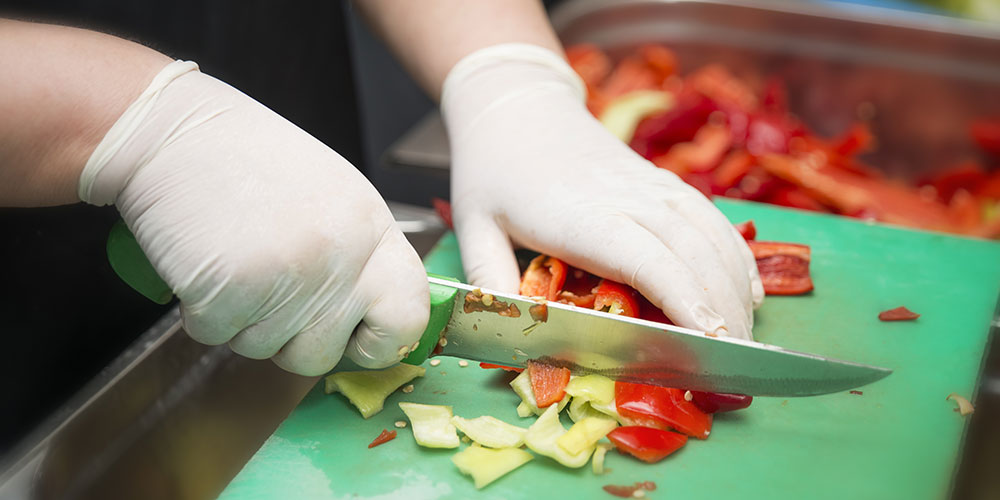According to the Food Standards Agency, nearly 17 million people suffer from stomach upsets in the UK every year resulting from poor hygiene practices. This, in turn, leads to about 11 million lost working days and costs the country over one billion pounds per year.
The cost in fines to a business found guilty of causing food poisoning can be in the tens of thousands and even lead to prison sentences. However, even minor incidences of food poisoning can destroy the hard built reputation of a business and lead to closure.
So, what can be done to minimise the risk?

The contamination of food can occur at any stage of preparation; however, a poorly maintained environment will significantly increase the chances of individuals becoming seriously ill. The build-up of E.Coli and MRSA in food preparation areas are cited as common causes of food poisoning.
Any food preparation environment that is not designed to inhibit and reduce the presence of harmful bacteria runs the risk of contaminating any food that comes into contact with surfaces, which of course can lead to widespread contamination.
For more information on how E.Coli can develop, along with the symptoms and prevention techniques, see our video guide below:
As we’ve mentioned previously, when it comes to maintaining a clean environment in a professional working space, hygienic wall cladding can ensure that bacteria like E.Coli and MRSA does not have an opportunity to grow and develop.
When looking to reduce the risk of food poisoning, something that is particularly important for businesses in hospitality like restaurants and bars, hygienic wall cladding can provide a long-lasting solution in both kitchen and front-of-house areas.
Compared to tiles, hygienic wall cladding panels do not typically have porous, grouted areas that can easily harbour bacteria, meaning that they can protect spaces for longer. They are also easier to clean than traditional walls and tiles.
Whether it’s our PVC hygienic wall cladding, our wall protection product BioArmis, or our antimicrobial wall cladding panels, BioClad’s products are all designed to inhibit the growth of harmful bacteria to uphold protection for longer.
As well as reducing the chances of food poisoning, hygienic wall cladding solutions:
Unlike BioClad, standard hygienic wall cladding is not independently tested in a laboratory for its antibacterial protection.
With BioClad, our antimicrobial element containing BioCote silver-ion technology is impregnated into our wall panels before installation. This stops the growth of bacteria, microbes and mould by up to 99.9% for the lifetime of the panels which, in turn, reduces the risk of food poisoning throughout the specified area.
For any business that deals with food preparation, maintaining a clean environment will be of utmost importance. To reduce the risk of food poisoning, investing in the right hygienic wall cladding solution can be critical in upholding protection.
Our hygienic wall cladding for commercial kitchens are proven to be effective in revolutionising working spaces for businesses in the hospitality sector. For more information on how we can help you, contact us today!
Order Free Samples
Order Free Samples